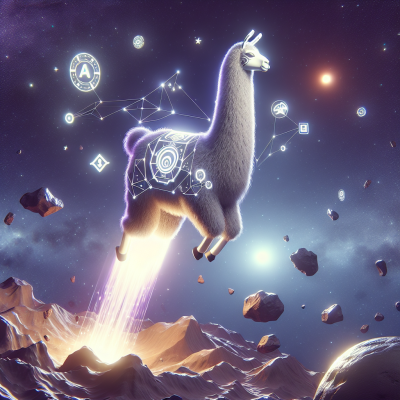
Meta’s Llama 3.2 AI Model Takes Flight: A New Era of Space-Ready AI
The final frontier just got a major technological upgrade. In an unprecedented collaboration, Meta and Booz Allen Hamilton have joined forces to deploy a fine-tuned version of Llama 3.2 aboard the International Space Station (ISS) National Laboratory. This marks a historic step in demonstrating the potential of open-source artificial intelligence models in one of the most challenging environments known to humankind — outer space.
The Power Behind Space Llama
Llama 3.2, an open-source AI model developed by Meta, has been fine-tuned and rigorously prepared to operate under the extreme conditions of space. Space, with its radiation, limited bandwidth, and power constraints, presents unique challenges for any computing technology, especially AI.
Meta’s collaboration with Booz Allen Hamilton is a strategic move aimed not just at proving Llama’s resilience but also at laying the groundwork for how AI might support future endeavors beyond our planet, including Mars exploration, deep-space missions, and long-term orbital research.
Why AI in Space Matters
Bringing Llama 3.2 to the ISS isn’t merely a technical stunt—it’s a forward-thinking strategy to unleash the full potential of AI in supporting astronauts and researchers. The space environment requires autonomous and semi-autonomous systems that can:
- Process enormous amounts of data in real-time without reliance on Earth-based computing resources.
- Enable onboard decision-making in scenarios where communication delays could become critical.
- Assist in research and operations by analyzing environmental data, providing diagnostics, and even interacting with crew members.
How Llama 3.2 Was Prepped for Orbit
Preparing an AI model for the rigors of space wasn’t a simple task. The collaborative team had to ensure that Llama 3.2 could:
- Operate efficiently on resource-constrained hardware aboard the ISS.
- Handle intermittent communication links with ground support systems.
- Withstand cosmic radiation and temperature fluctuations
- Minimize energy consumption while maintaining robust performance.
Optimization techniques included extensive model pruning, quantization, and custom hardware adaptations, pushing the boundaries of AI engineering.
Booz Allen’s Role in the Mission
Booz Allen Hamilton brought deep expertise in deploying mission-critical AI systems to this project. Their experience with national security, defense, and frontier technology projects positioned them as the ideal partner to fine-tune, validate, and integrate Llama 3.2 into the ISS environment.
Their contributions span:
- Pre-deployment simulations and testing to ensure functionality.
- On-orbit support to monitor the Llama’s performance and collect valuable data for future iterations.
- Developing use cases for possible AI applications in space research.
Potential Applications of Space-Grade AI
The deployment of Llama 3.2 isn’t just an experiment; it’s a proof of concept for numerous future applications. Examples include:
Autonomous Space Station Management
Imagine AI managing the station’s environmental controls, power distribution, and life support systems autonomously, ensuring operations continue smoothly even during a communication blackout with Earth.
Scientific Research Assistance
Llama 3.2 could assist astronauts with real-time experiment analysis, helping process experimental data faster and more accurately than ever before.
Intelligent Crew Support
From recommending procedural steps to offering mental wellness support, AI could become an indispensable companion for astronauts on long-duration missions.
Opening the Door for Open-Source AI in Space
The use of Llama 3.2 highlights the shift towards open-source software in space exploration. Traditionally, space technologies have been proprietary and tightly controlled. However, open-source models like Meta’s Llama make cutting-edge AI accessible to a much broader spectrum of users, including researchers, startups, and academic institutions working on aerospace innovation.
This democratization of access could accelerate space research exponentially, allowing a diverse group of innovators to contribute solutions that were once only possible in large government or corporate laboratories.
Moving Forward
Meta’s and Booz Allen’s achievement with Space Llama signals the beginning of a new age where AI is not an auxiliary tool but a core component of space missions. It will be exciting to see how Llama 3.2 performs in the unforgiving environment of low-Earth orbit and what new possibilities its success could unlock.
As AI models continue to evolve, adaptive, efficient, and robust AI like Space Llama could become the blueprint for autonomous systems supporting humanity’s push into the stars — from lunar bases to missions to Mars and beyond.
Final Thoughts
Space has always been the ultimate testing ground for human ingenuity. By sending Llama 3.2 to the International Space Station, Meta and Booz Allen Hamilton are not just proving the resilience of open-source AI — they are helping to pioneer a future where artificial intelligence is an integral partner in our quest to explore the cosmos.
The stars are no longer the limit; with Space Llama aboard, they might just be the beginning.


Leave a Reply